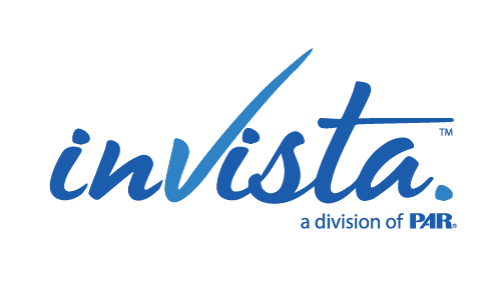Recruiting talented employees is only the first step to building a workforce. You also have to keep them. Hopping between jobs isn’t the taboo it once was, and employees today expect more than just a good salary. If you want to make a real impact on your organization’s talent retention, you’ll need a scientific, people-first strategy. Below, we list seven tips to build yours.
Why employee retention matters
First, let’s look at why employee retention matters. People leave jobs for all kinds of reasons, at any time. In fact, half of the respondents to a 2011 Business Insider survey said they had quit a job without a new one lined up during the recession of the preceding years. Most of those people said they quit because they were unhappy, and only one reported any regret.
Turnover is incredibly expensive. There are a lot of estimates out there, ranging from $10,000 per turn to 40 percent of first-year salary. For executive positions, it can go as high as 213 percent of salary! These costs include:
- Advertising a new position and conducting interviews, which may include travel costs, meals, search consultants, and more.
- Onboarding, training, and equipment.
- Lost productivity as the new hire gets up to full capacity.
What is more, estimates typically undervalue the intangible costs of turnover. Losing employees can damage morale of the remaining ones and increase their workload until a new hire is made. These employees are likely to become disengaged and may consider leaving themselves.
If you’re convinced you need to strengthen your talent retention strategy, try these seven things.
1. Find the right people for the roles
The first step to keeping talented employees is to find the ones who fit your company culture in the first place. There are three steps to achieving this:
- Know what skills and traits you need. By assessing your current team members, you can identify gaps in skill sets and possibly find people to promote to open positions. Then, you can hire for what you actually need.
- Write accurate job descriptions. Work with the people actually doing the work, not only the HR department, to paint a complete picture of the role. Include information about the company culture in addition to the must-haves of experience and education.
- Assess candidates thoroughly and accurately. Use a scientific approach to see beyond the resume and fully assess someone’s skills and abilities.
2. Present growth opportunities
Employees who see a future with a company are more likely to accept a job and to stay. Starting with the hiring process on through, keep a pulse on where employees need and want to grow professionally. Then support them with:
- Career development and training opportunities
- Mentorship programs
- Cross-training
- Transparent evaluations
Not only should you provide these opportunities, but you must empower individual employees to take advantage of them. Research has shown that increased job autonomy and perceived supervisor support decrease turnover. Let them chart their own career path and support them along the way.
3. Offer competitive benefits
In the U.S. workforce, many aspects of a person’s life are tied to their job. These may include their health insurance, retirement funds, life insurance, and even their gym membership. Changing jobs can mean a real shake-up, so they might be more inclined to stay if they like their benefits. For instance, 83 percent of employees say health insurance is very or extremely important in deciding whether to stay in or change jobs.
Less traditional benefits can help retain employees too. Many of today’s workers look for flexible work schedules, remote work, parental leave, time off to volunteer, and ample paid vacation. In one study, 80 percent of millennials said they would be more loyal to an employer offering flexible work options.
Take the time to understand what benefits your employees value most.
4. Treat employees fairly
A good retention management strategy should address fairness, or what might be called organizational justice. Whether employees feel they’re treated fairly influences their productivity, engagement, and loyalty.
One example where an employee might sense a lack of fairness is in their annual review, perhaps feeling that it doesn’t accurately reflect their performance. Your team will often tell you which systems and rewards are unfair. You should listen to them and act on their feedback if they perceive a policy or situation to be unfair.
Pay employees the industry standard or above, promote them when they deserve it, and remain transparent about it all.
5. Communicate openly
Closely tied to transparency is communication. Workplace communication can be formal or informal, but either type impacts talent retention. Employees who feel like they’re heard or being dealt with transparently are more apt to feel valued and stay around. Good communication:
- Builds trust
- Fosters collaboration
- Addresses issues before they become too big
- Involves employees in decisions that affect their jobs
Listening to employee feedback
Both parties need the chance to speak and to listen. First, listen to your employees. You can hold focus groups, interviews, or one-on-one meetings. Company-wide surveys can tell you the sentiment of the organization. If you have sensitive topics to discuss, make surveys anonymous. Once you open the lines of communication, focus on goals that help with retention.
Keeping employees informed
The other side of employee communication is telling them what leadership is thinking and doing. Set clear expectations for all employees and create a system for addressing performance issues. Provide training to managers in emotional support, role-modeling behaviors, and delivering employee feedback. Make sure that all managers and leaders recognize achievements and thank their reports. Competitive salaries and benefits are nice, but many talented employees get even greater satisfaction from shout-outs, awards, or kudos from their manager.
6. Support social connections
Over time, employees develop connections and relationships both on and off the job. Employees who have many connections are more embedded in the organization and more likely to stay. You can encourage those connections by offering in-office social activities, off-site get-togethers, and company celebrations. Something as simple as a coffee bar can foster communication, while big events like company picnics let people meet each other’s family and friends.
Wherever possible, find ways to encourage connection. Ensure that you’re driving your company values from your longest-tenured and top-performing team members, which will encourage talent retention.
7. Rely on data
It’s one thing to have people voice a concern about an issue with your organization. It’s much more powerful to be able to statistically link an issue directly to retention problems.
Although it requires more sophistication and data collection, if you study talent retention analytically, the real drivers of turnover become clearer. Then you don’t waste time targeting the wrong issues. You can make a solid case for change and demonstrate the results.
Talent retention tools can take the complex problem of turnover, break it down into easily understood data, and offer solutions. In fact, sometimes unusual, low-cost solutions can obtain the desired results. It’s not uncommon for businesses to throw hundreds of thousands of dollars at recruitment and retention strategies, not realizing they could create simple incentive programs or more flexible schedules.
Take the first step toward talent retention
Regardless of your goals and current experience with resolving talent retention issues, InVista can help. We offer modern talent assessment and retention tools that can take the complex problem of turnover and offer simple approaches to understand and resolve it. To talk about how our talent retention tools can help improve your retention rates, get in touch with us today.
Once you have a thorough understanding of what issues are important, and which of those actually drive disengagement and turnover, you can make real change in your organization.


Recent Comments